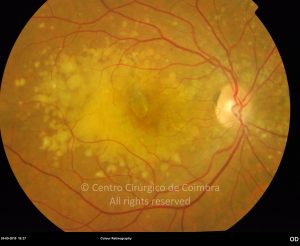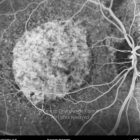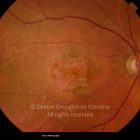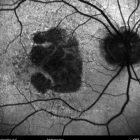Age-related macular degeneration (AMD) is a major public health problem. It is the leading cause of severe central visual acuity loss in developed countries in people over 50 years of age.
Initial stages of AMD are characterized by drusen, focal hyperpigmentation or retinal pigment epithelium (RPE) degeneration. Most patients are asymptomatic or complain of mild decrease in visual acuity and metamorphopsias.
Two main forms of advanced AMD have been described: dry-AMD, representing 85-90% of patients; and neovascular (wet) AMD that represents 10-15% of cases.
Dry-AMD is characterized by the presence of extensive areas of RPE atrophy. These usually correspond to areas of previous drusenoid retinal detachment or areas of soft confluent drusen that underwent regression. Areas of RPE atrophy can be seen clinically as regions of retinal and RPE attenuation, revealing the vascular pattern of the choriocapillaris (which can also be atrophic). When areas of RPE atrophy are contiguous, the condition is known as geographic atrophy. If the areas of RPE loss are not contiguous, assuming a mottled appearance, the term non-geographic atrophy is applied. Visual loss is related to the extent of RPE atrophy and the involvement of the foveal region.
Differential Diagnosis:
- Central serous chorioretinopathy (CSC)
- Pattern Dystrophy
- Basal Laminar Drusen
- Drug toxicity.

























